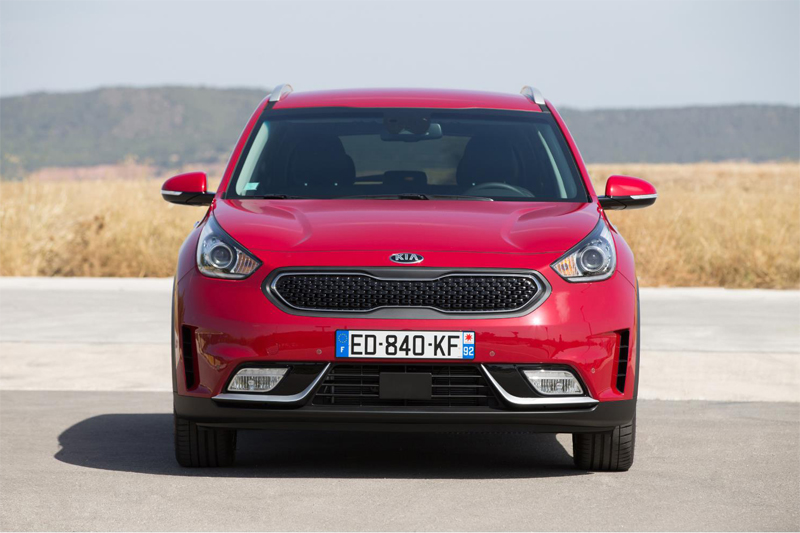 Kia has the launched the all-new Niro, priced from just £21,295. Niro combines the in-demand styling of a compact crossover vehicle with the low emissions and high fuel economy of a hybrid car. With CO2 emissions as low as 88g/km and fuel economy of up to 74.3mpg, Niro will make a significant contribution in helping Kia meet its pledge to reduce the average emissions of its range by 25 per cent before 2020.
Kia has the launched the all-new Niro, priced from just £21,295. Niro combines the in-demand styling of a compact crossover vehicle with the low emissions and high fuel economy of a hybrid car. With CO2 emissions as low as 88g/km and fuel economy of up to 74.3mpg, Niro will make a significant contribution in helping Kia meet its pledge to reduce the average emissions of its range by 25 per cent before 2020.
Niro is not based on any other Kia but is a dedicated hybrid model with an all-new platform which will only ever be used for electrified vehicles. It also has an all-new powertrain featuring a 1.6-litre, 104bhp internal combustion engine and a 43.5bhp electric motor driving through a six-speed double-clutch automatic transmission.
Its includes the latest connectivity and active safety technologies, including Kia Connected Services featuring TomTom, wireless smartphone charging, autonomous emergency braking, smart cruise control and lane-keeping, blind spot and rear cross traffic warning systems. In a first for Kia, it also offers Android Auto, which links Android smartphones to Google Maps navigation, Google Play music, hands-free calls and texts and voice recognition via pre-downloaded apps.
Niro in the UK
Niro comes to the UK in a four-model line-up badged ‘1’, ‘2’, ‘3’ and ‘First Edition’. Every version has a Lane Keep Assist System, Hill-start Assist Control, Cruise Control and a Speed Limiter. Every Niro also has a DAB radio and is able to support Bluetooth smartphone connectivity and music streaming.
Niro is the first Kia with Android Auto, which works with Android smartphones running 5.0 (Lollipop) or higher. Android Auto connects the user’s smartphone to the car’s infotainment system and, through pre-downloaded apps, gives access to a variety of services such as Google Maps navigation, Google Play music, hands-free calls and texts and voice recognition.
In addition to its connectivity and driver assistance systems, grade ‘1’ comes with 16-inch alloy wheels, a high-gloss black radiator grille with a black and chrome surround, dual automatic air conditioning, an automatic windscreen de-fogging system, LED daytime running lights and tail lights, a 3.5-inch TFT supervision cluster, all-round electric windows and electric exterior mirror adjustment, USB and AUX ports and a trip computer.
Grade ‘2’ adds a 7-inch touchscreen navigation system with European mapping, a Reversing Camera and Kia Connected Services linked to TomTom®. This provides up-to-the-minute information on traffic hold-ups, weather, speed camera locations and local points of interest. Kia Connected Services is free for seven years from the time the car is bought. Grade ‘2’’s standard specification also introduces high-gloss black trim highlights and a leather-covered steering wheel and gearshifter, black cloth and leather upholstery, roof rails, privacy glass on the rear windows and tailgate, chrome interior and exterior door handles, reversing sensors, an under-floor tray, rain-sensing wipers, a ventilation duct in the rear of the cabin and electrically adjustable, heated and folding door mirrors with LED indicators.
Further additions for grade ‘3’ are an 8-inch touchscreen navigation system with European mapping, a wireless mobile phone charger and an eight-speaker ® Premium sound system with an external amplifier. The step up to grade ‘3’ also brings 18-inch alloy wheels, black leather upholstery, front parking sensors, heated front seats and steering wheel, a power-adjustable driver’s seat plus powered lumbar adjustment and stainless steel scuff sill plates.
Meanwhile, the top-of-the-range ‘First Edition’ version adds Autonomous Emergency Braking, Blind Spot Detection with a Rear Cross Traffic Alert and Smart Cruise Control. This model is also distinguished by unique grey leather trim, white interior trim inserts, a smart key and engine start/stop button, heated outer rear seats, ventilated front seats and an electric tilting and sliding sunroof.
Autonomous Emergency Braking and Smart Cruise Control are optionally available on grades ‘1’, ‘2’ and ‘3’ in an ADAS (Advanced Driver Assistance Systems) package. With these features fitted, Niro has been awarded a five-star crash-test rating by Euro NCAP.
UK Niro pricing
| Model |
Insurance |
Price |
| ‘1’ 1.6 GDi 1.56kWh lithium-ion 139bhp 6DCT |
12 |
£21,295 |
| ‘2’ 1.6 GDi 1.56kWh lithium-ion 139bhp 6DCT |
12 |
£22,795 |
| ‘3’ 1.6 GDi 1.56kWh lithium-ion 139bhp 6DCT |
14 |
£24,695 |
| ‘First Edition’ 1.6 GDi 1.56kWh lithium-ion 139bhp 6DCT |
12 |
£26,995 |
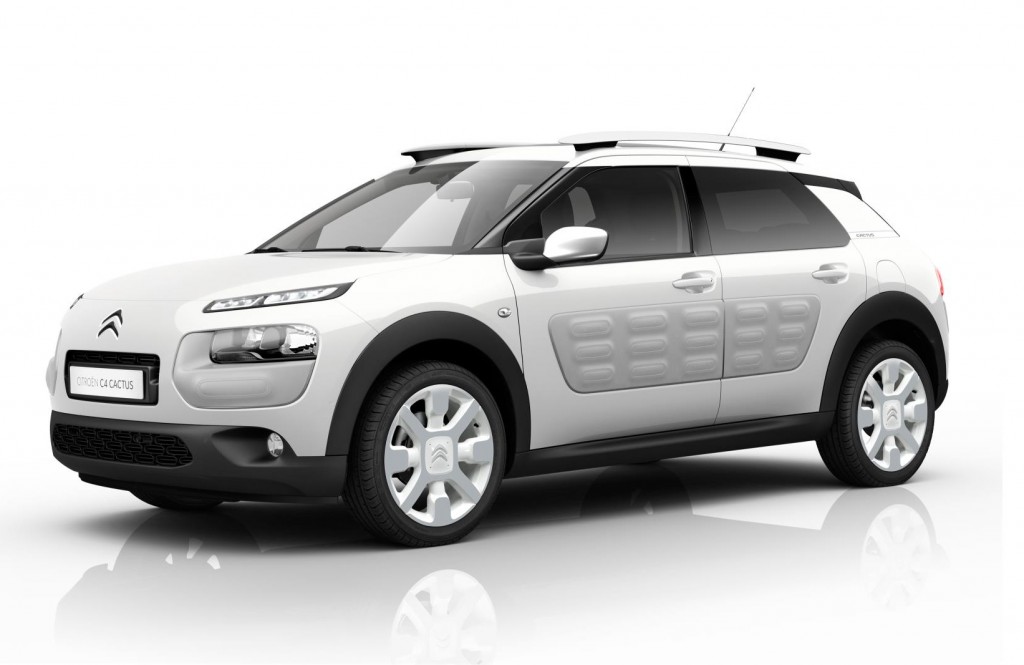 Citroën is further enhancing the standout style of the award-winning C4 Cactus, with the launch of a new C4 Cactus W Special Edition that will be on sale in the UK from 1 August.
Citroën is further enhancing the standout style of the award-winning C4 Cactus, with the launch of a new C4 Cactus W Special Edition that will be on sale in the UK from 1 August.
 Charting the amazing story of Christopher Many’s 125,000-mile, eight-and-a-half-year adventure, Left Beyond the Horizon chronicles his inspirational journey around the world in his trusty 1975 Series III Land Rover, Matilda.
Charting the amazing story of Christopher Many’s 125,000-mile, eight-and-a-half-year adventure, Left Beyond the Horizon chronicles his inspirational journey around the world in his trusty 1975 Series III Land Rover, Matilda. The process of buying and selling cars will be done almost entirely remotely using video technology within five years, claims new research.
The process of buying and selling cars will be done almost entirely remotely using video technology within five years, claims new research. Road safety and breakdown organisation GEM Motoring Assist is encouraging holidaymakers to ensure they are aware of speed limits, alcohol limits and other driving regulations before setting off on an overseas holiday this summer.
Road safety and breakdown organisation GEM Motoring Assist is encouraging holidaymakers to ensure they are aware of speed limits, alcohol limits and other driving regulations before setting off on an overseas holiday this summer.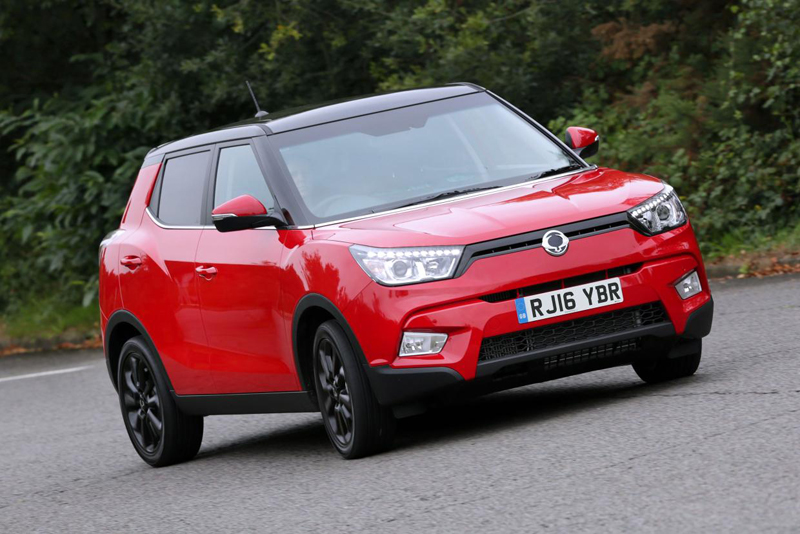 The SsangYong range of 4x4s and SUVs is now available in Norwich and the surrounding area, following the appointment of Desira Group Plc in Norwich.
The SsangYong range of 4x4s and SUVs is now available in Norwich and the surrounding area, following the appointment of Desira Group Plc in Norwich.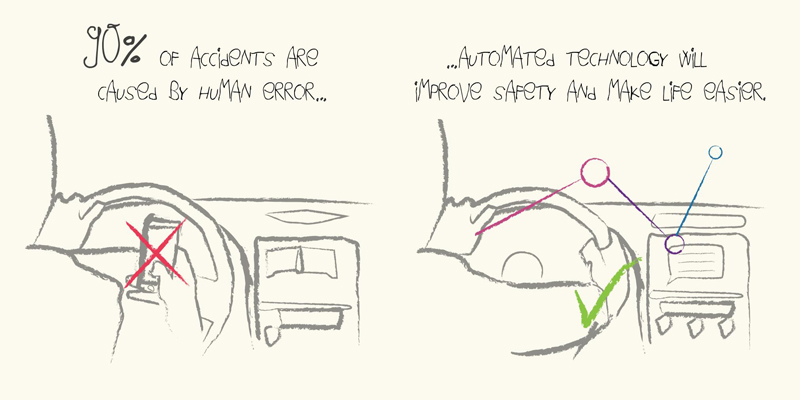 Features on future cars, that the British public expect to have, are already on offer today according to a new survey conducted by Bosch. When asked what they expect a new car to be able to do in 2025, two thirds (66%) of desired functions are already fitted to production cars today, while the remaining 33% will enter production within the next two years. The survey is part of Bosch’s #asmartercar campaign, to improve knowledge and acceptance of driverless car technologies.
Features on future cars, that the British public expect to have, are already on offer today according to a new survey conducted by Bosch. When asked what they expect a new car to be able to do in 2025, two thirds (66%) of desired functions are already fitted to production cars today, while the remaining 33% will enter production within the next two years. The survey is part of Bosch’s #asmartercar campaign, to improve knowledge and acceptance of driverless car technologies.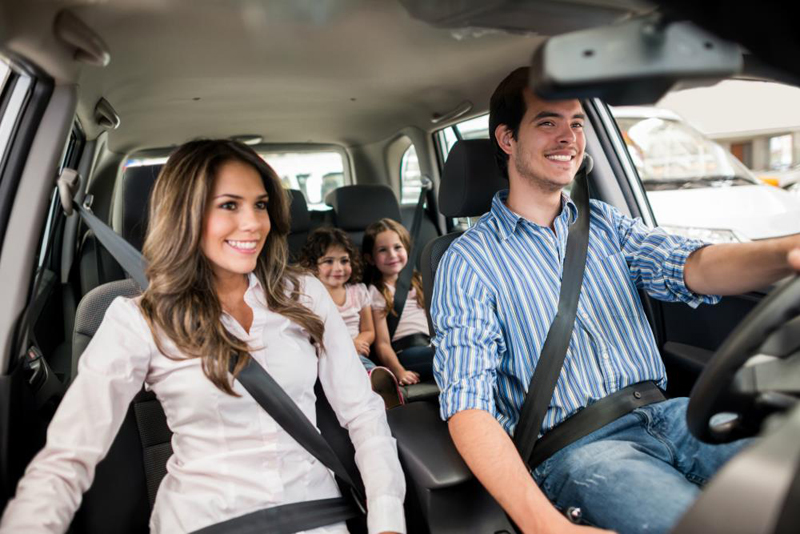 Motor Codes, the government-backed consumer watchdog for the automotive industry, has commissioned an online YouGov poll to find out the best activity to keep children busy on long car journeys during the holiday season. The study was carried out to mark the launch of the motoring body’s summer social media prize draw competition to win a £250 fuel voucher.
Motor Codes, the government-backed consumer watchdog for the automotive industry, has commissioned an online YouGov poll to find out the best activity to keep children busy on long car journeys during the holiday season. The study was carried out to mark the launch of the motoring body’s summer social media prize draw competition to win a £250 fuel voucher. Kia has the launched the all-new Niro, priced from just £21,295. Niro combines the in-demand styling of a compact crossover vehicle with the low emissions and high fuel economy of a hybrid car. With CO2 emissions as low as 88g/km and fuel economy of up to 74.3mpg, Niro will make a significant contribution in helping Kia meet its pledge to reduce the average emissions of its range by 25 per cent before 2020.
Kia has the launched the all-new Niro, priced from just £21,295. Niro combines the in-demand styling of a compact crossover vehicle with the low emissions and high fuel economy of a hybrid car. With CO2 emissions as low as 88g/km and fuel economy of up to 74.3mpg, Niro will make a significant contribution in helping Kia meet its pledge to reduce the average emissions of its range by 25 per cent before 2020.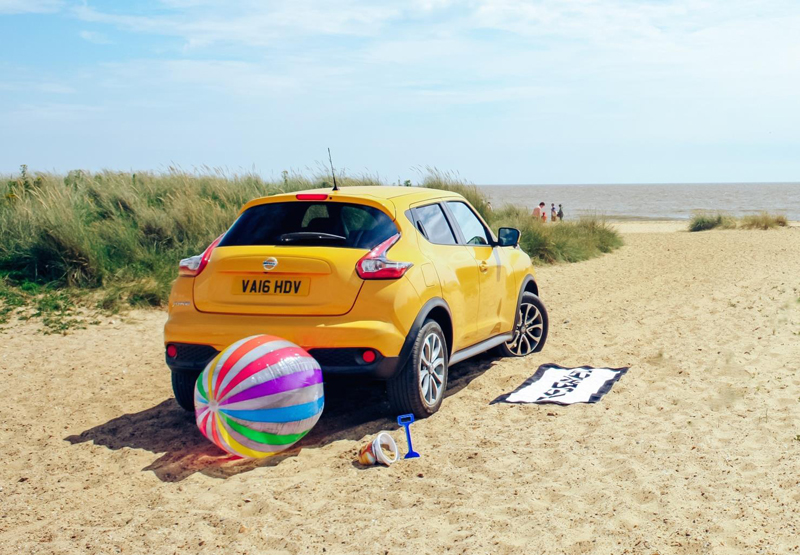 The advice from skincare experts at this time of year is to slap on the SPF 50 sun cream to protect your skin from the sun’s harmful ultraviolet (UV) rays. That’s not practical with the body panels of a Nissan crossover… and it’s also not necessary.
The advice from skincare experts at this time of year is to slap on the SPF 50 sun cream to protect your skin from the sun’s harmful ultraviolet (UV) rays. That’s not practical with the body panels of a Nissan crossover… and it’s also not necessary.